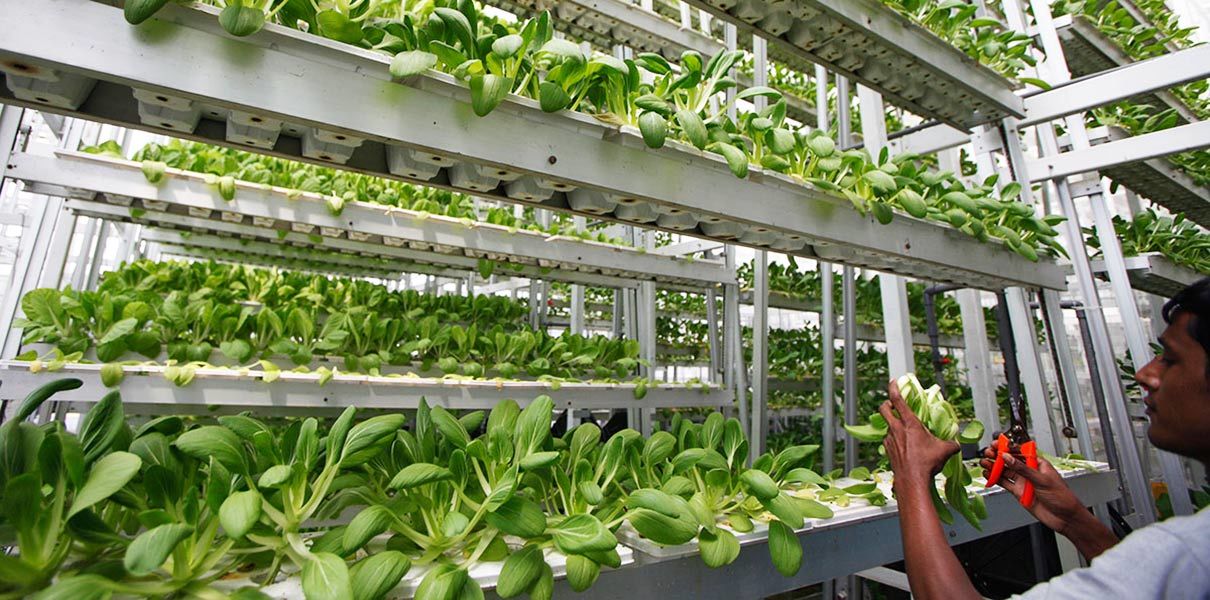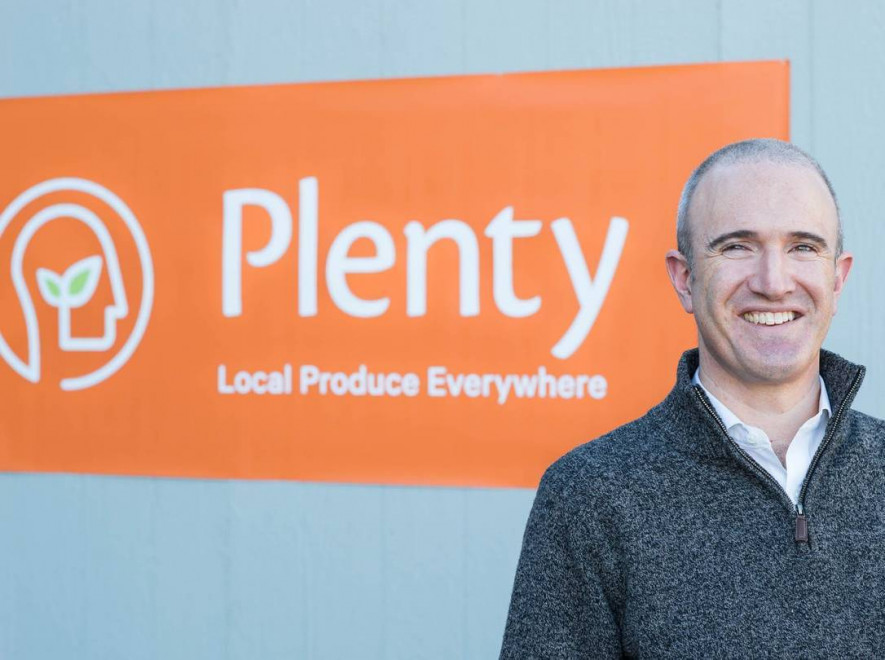The SoftBank Group Corp. chief’s Vision Fund is leading a $200 million investment in Silicon Valley startup Plenty, which says it has cracked the code on growing crops indoors super efficiently. Other participants in the round include Moore Capital Management founder Louis Bacon as well as existing backers such as DCM Ventures and funds that invest on behalf of Alphabet’s Eric Schmidt and Amazon’s Jeff Bezos.
This is Son’s first big bet on agricultural disruption and something of a departure from his recent investments in giant startups like office-space startup WeWork Cos. and Chinese ride-hailing provider Didi Chuxing, but he was attracted by Plenty’s potential to help boost food production near big cities.
“We believe Plenty’s team will remake the current food system to improve people’s quality of life,” Son said in an emailed statement.
Matt Barnard, Plenty’s co-founder, is scheduled to appear Thursday in Tokyo at SoftBank World, the company’s annual two-day event aimed for customers and suppliers. In previous years, Son has shared the stage with Alibaba Group Holding Ltd. co-founder Jack Ma and the company’s Pepper robot.
Son’s backing could give a big boost to vertical farming, a much-hyped concept that so far has failed to revolutionize crop production. In recent years several companies including Atlanta-based Podponics, Vancouver’s LocalGarden and Chicago-area FarmedHere have shut down indoor farms because they weren’t economically viable.
Barnard, who grew up on a commercial farm in Wisconsin, founded Plenty in 2014 with Nate Storey, a crop scientist who previously started another indoor farm. Plenty does things differently from its rivals. Where most grow plants on shelves like a tall dresser, Plenty uses 20-foot-tall columns from which the plants jut horizontally; picture poles lined up in rows, carpeted in plants from top to bottom. Nutrients and water drip down the columns. Plenty scientists also figured out how to more cheaply remove excess heat emitted by the LED grow lights–a problem Barnard says tripped up other operations.
The company says it can cultivate many more crops per square foot than competitors and uses less energy because the plant food is mostly gravity-fed rather than pumped. “Because we work with physics, not against it, we save a lot of money,” Barnard says. An internet-connected system delivers specific types of light, air composition, humidity and nutrition, depending on which crop is being grown. Plenty says it can yield up to 350 times more produce in a given area than conventional farms -- with 1 percent of the water.

During a recent visit to the company’s facility in San Francisco, the columns are covered in heirloom varietals of purple Siberian kale, red leaf lettuce, sorrel and special species of basil and chives. Barnard says these are more nutritious and flavorful varieties than the mass-produced seeds that were bred to survive the vagaries of commercial production. The company selects which plants to grow based on taste tests with consumers and professional chefs. (A sampling during the tour confirms that the produce is tastier than store-bought.)
“We select stuff that people love because we have the freedom to do that because our supply chain is so short and simple,” Barnard says. “The field doesn’t have that option. It has to grow things that can survive 3,000 miles in a truck. That’s why the field grows iceberg lettuce.”
Skeptics of vertical farms note that they are best suited to growing leafy produce. “Rooting and fruiting” vegetables like carrots, beets, tomatoes, peppers, eggplants and cucumbers are harder to grow under such circumstances and hence more costly. Barnard says Plenty is working on growing cucumbers. So far, most of the startup’s plants are donated to food banks or used for consumer tests, including at a Google campus kitchen. Plenty will start distribution in the San Francisco Bay Area this year. International expansion is the next step and that’s where Son comes in.
A few months ago DCM Ventures co-founder David Chao introduced Barnard to the SoftBank chairman and CEO in California. The meeting was supposed to take 15 minutes but ended up lasting 45 because Son was excited about Plenty’s vision. Two weeks later, Barnard and Chao flew to Tokyo for another meeting with Son, who was skeptical at first, Chao says, but ended up sold on Plenty’s prospects.
“Ever since the Egyptian period, farming has been done one way: flat on the ground, outdoors,” Chao says. “But with indoor farming Masa realizes it’s revolutionary.
Son is particularly interested in how Plenty can help nations grow sufficient food to support the population. His Vision Fund backers include sovereign wealth funds from the Middle East, where drought, population growth and a lack of arable land are fueling concerns about food shortages and political instability. Japan, Son’s home country, imports much of its own food and lost farmland after the nuclear power accident six years ago. Sonny Ramaswamy, director of the National Institute of Food and Agriculture at the U.S. Department of Agriculture, says indoor farming will play a significant role in easing shortages of green vegetables.
Chao says the $200 million Vision Fund investment will be used mostly to help Plenty expand domestically and internationally. Eventually, the company hopes to erect pre-fabricated farms outside major cities around the world. SoftBank has extensive connections around the world, Chao says, and wants “to help Plenty expand very quickly, particularly in China, Japan and the Middle East.”
Dickson Despommier, a Columbia professor who wrote “The Vertical Farm: Feeding the World in the 21st Century,” says indoor farming will never completely replace conventional outdoor agriculture but will supplement a growing portion of certain kinds of produce.
“In places where there is no ready access to what they’re growing, then they can corner the market,” he says. “If they do it where the price is right and the demand is right, there’s no reason why they couldn’t go wander into the sunset laughing as they go.”



